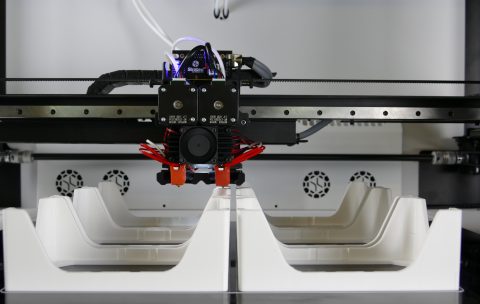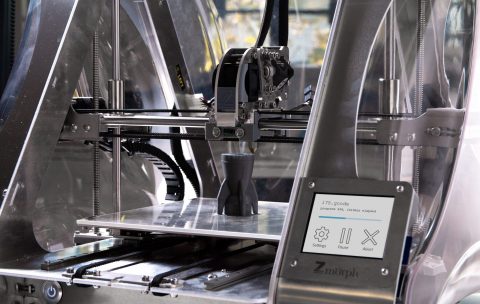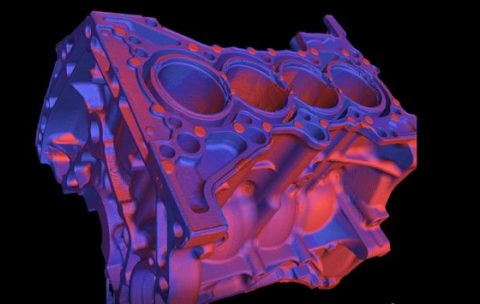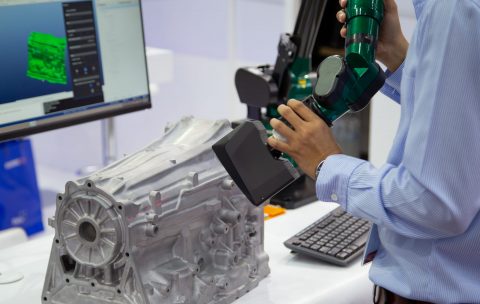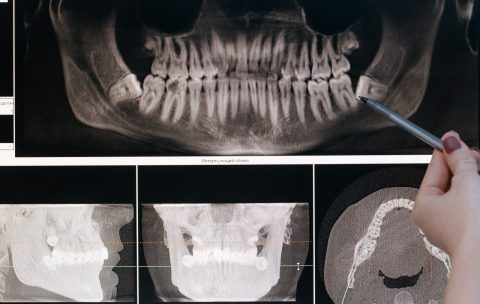In order to gain a competitive edge, manufacturing giants need to find the next best thing to improve mass production techniques.
The concept of ‘additive manufacturing’ (modelling 3D parts before production) is one that has revolutionized numerous industries. Using laser-based and advanced 3D printing techniques, machines are now capable of producing functional components with complex geometries from scratch, and the applications are limitless.
Combining additive manufacturing with state of the art technologies such as NDT via 3D CT can reduce manufacturing lead times, improve product quality, increase organizational performance and provide a range of other benefits.
Additive Manufacturing in the Aerospace sector
Additive Manufacturing embraces a variety of methods, ranging from laser-induced techniques to large-material welding. This allows manufacturers to gain more control of the type of material used with any set of specific requirements.
A key outlook in the aerospace industry is to continuously find sturdier and more reliable materials while being lighter weight. This in turn results in safer parts and more fuel-efficient engines for a variety of aircrafts such as helicopters, jets, space vehicles and airliners.
One of the challenges in the market is restrictions on the volume of construction and the size of the product itself. Aircrafts are made up of extremely large components and Additive Manufacturing machines are limited to the smaller volumes generally offered by most 3D printing methods.
However, the 3D printing space has made significant advances such as the fuselage panel by STELIA as well as GE working on solutions to solve this constraint. Boeing earned a Guinness world record for printing the largest single piece object – a wing trim tool – in a mere 30 hours.
While Additive has been present in the industry a while, reports suggest a growth of 23% between 2017 and 2021.
3D CT & Additive Manufacturing
Many emerging businesses in the aerospace industry are likely to adopt Additive as their primary tool for engineering design, which in turn calls for the need to employ NDT via 3D CT. This is crucial for startups as it addresses concerns in regards to cost, labour and manufacturing accuracy.
Leaders in aerospace such as SpaceX, Blue Origin and Virgin Orbits all benefit from Additive, as they are designers of large-scale machine parts which leverage 3D CT in post-production processes. When a 3D part is printed and you consider its internal complexities, it is clear why many scanning methodologies such as optical measurement tools fail, as they only inspect the surface. At this time, 3D CT is the only solution that makes sense when handling 3D printed objects.
Key Benefits:
- Check powder grain size, distribution, porosity, particle contamination.
- Optimize parts through rapid prototyping, failure analysis and improve the printing process.
- Quality assurance: perform CT measurements to help define guidelines in a volumetric inspection.
- Additive manufacturing has come a long way and more businesses are acknowledging the range of benefits associated with its use. Manufacturers are demanding an open additive ecosystem to overcome system inflexibility and material choice. This could lead to increased partnerships with customers by providing more control over their product.
Share to:
New Paradigm in Additive Manufacturing
Read about the benefits for Computed Tomography for Additive Manufacturing

